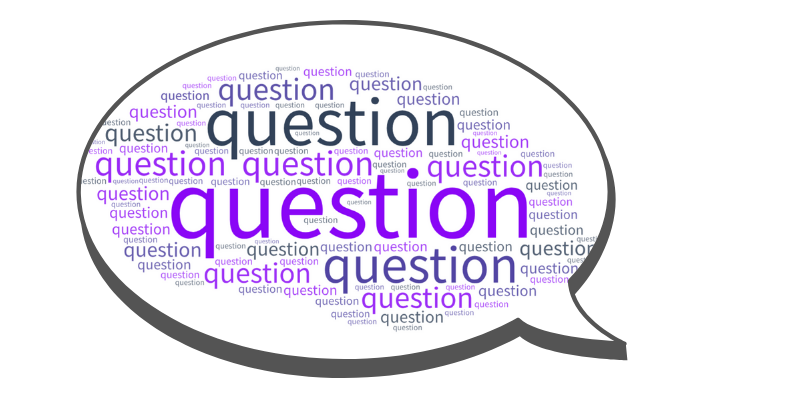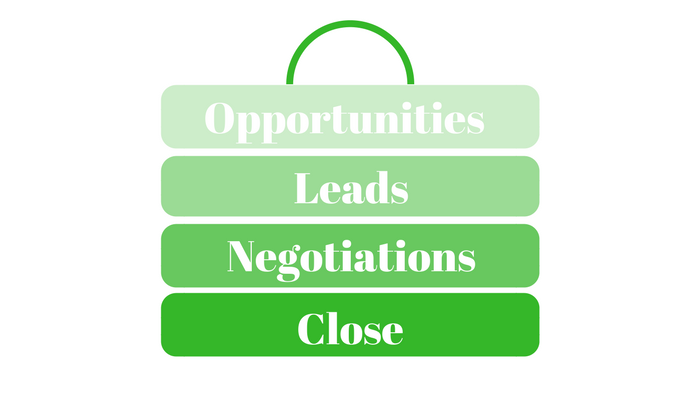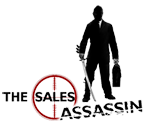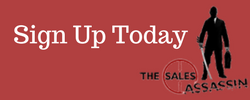
excerpt from The Sales Assassin: Master Your Black Belt In Sales
by Anthony Caliendo
Client Qualification – the most overused, abused, ignored, misunderstood and yet most valuable and indispensable tool of the sales process. Bottom-line, either learn to use it or definitely lose every great sales opportunity you will ever have.
Before the onslaught of the internet world, sales professionals put every ounce of their effort into every sales meeting on their calendar. Every meeting was seen as the potential big sale opportunity. Online access to information and the new sales attitude has changed everything, paving the way to immediately and accurately weigh which leads are worth your efforts and which ones are not worth your time. Every sales professional must learn the modern concept of properly qualifying each sales lead. This skill will be the difference between landing a rich new business deal and wasting lots of time, energy and money, barking up the wrong tree. Your time is money! An efficient, effective qualification process saves time and increases your revenue!
✓ a 5% increase in selling time can yield a 20% increase in revenue,
✓ a 1% increase in pipeline value can yield a 25% increase in revenue
✓ a 15% decrease in the length of the sales cycle can yield a 30% increase in revenue.
– – Jon Miller
The Art of Asking the Right Questions Without Asking
A successful salesperson – a Sales Assassin Master (SAM) must learn to extract as much information as possible and be able to capture it in a very short period of time. That information you extract must allow you to assess what your customer’s needs are – then you must find a way to do it without them even realizing it. Master Bruce Lee maintained that his fighting style was The Art of Fighting without Fighting. Likewise, in client qualification, I call this process the art of asking questions without asking. I truly consider it an art form because you have to use “finesse without offense” to get them off the defense in the very beginning of the call. Finesse might sound like an inappropriate word to use but consider the alternative. If they sense that you’re a bloodsucker only interested in closing them, game over. This is essential! It’s all about building a rapport and then “staging” a conversation with your potential client in such a way that they’re giving you the info you need for your closing arsenal. By doing so, you’re getting him or her involved in the sales process and making them feel like they’re playing an important role. A SAM is able to ascertain if there’s even an opportunity to do business within the first 2 minutes of the call.
Technical qualifying using “Hot Spots”
Qualifying is an unbelievably important part of the sales process, especially in today’s age of hyper-technology and having instant access to information via your smartphone. Consumers have become well informed and incredibly intelligent about everything. But here’s the key: you have to be more knowledgeable and better equipped to assess their needs than they are, otherwise, what do they need you for? Earlier in this book, we’ve discussed the importance of having intimate knowledge of your product or service. The qualification process is when you’ll put this skill to use because this is when you’ll focus on key “hot spots” with your potential buyer in order to make the sale. For example, are they looking for better quality? Are they looking for a better price? Is service what’s most important to them? Is it a combo of all three or is it something else entirely? Being able to isolate the hot spots in order to assess need requires a mastery level of technical qualifying skills, especially when your prospect is “cold” and doesn’t realize the need exists.
As I mentioned earlier, my primary business is grated and shredded hard Italian cheese. I’m known in the industry as The Big Cheese Boss. You’d be amazed to know that over 4.2 billion pounds of Italian cheeses are produced in the US each year and the type of cheese I sell is grated, shredded and shaved hard Italian cheeses (i.e. Parmesan, Romano, Asiago and blends). One of my pitches is “we custom blend based on price and quality.” Custom blend? Yes, that’s right, custom blend! If I told you how intricate the grated cheese business is and how incredibly important the qualification process is to get to the finish line, you’d be amazed. For example, when I’m speaking to a potential buyer I need to know key pieces of information: i.e. is this for a new project or an existing project; is there a specification sheet available for review; can we obtain a sample for analysis and flavor profiling, what is the product application, estimated usage, distribution; what quality is required (high grade, medium grade or low grade); what price point do I need to meet, etc. And if I cannot extract this data during my first conversation or first couple of emails then I’ve most likely decreased my chances of closing the sale. This is an example of knowing my product and knowing the right technical qualifying questions to ask so that I can isolate the hot spots and close the sale.
If you are new to a company or new to the business you’re in, then it takes time to learn your product and to know exactly what info you need to extract in order to gain new business. However, as a Sales Assassin Master, when you know your products inside and out you’ll quickly learn what the “hot spots” are and what the majority of your client base is looking for. The quicker you isolate those “hot spots,” the quicker you’ll be able to determine if you have a viable opportunity to sell or not.
Four Parts to Qualification Questioning
Part 1: Pre-meeting Research
Your pre-meeting research will be the basis of meeting success. Use their website as a key source of information. Remember that their Facebook page and Twitter feed will also provide current updates. Use LinkedIn as primary source information of the key players. Key research items include:
- Knowledge of the client’s business:
- Demographics and scope of business, products and services offered
- Who are the key players and know their background, especially know the background of people with whom you will be meeting
- Understand current business issues
- Competitor information
Part 2: Pre-meeting Preparation and Organization
After completing your research, organize the information obtained in a logical sequence for you to use it. Develop your qualifying questions. It is important to understand the questioning process has several objectives:
- To gain answers and further insights beyond your research for information you do not know or understand or have access to
- Even though you may already know certain information, great questions can serve to demonstrate your interest and desire to learn more
Part 3: Meeting Execution
Learning to control a sales meeting can be a tricky proposition. The following advice will guide you to success:
- Learn to take quick notes. Trying to capture every word is a recipe for failure and can keep you from making that all-important eye contact. Even if you are doing a conference call, you must try to capture the essence of the spirit of the conversation
- Use targeted questions to control the meeting
- Avoid the tendency to attack the client with your sales pitch
- Immediately express appreciation for the opportunity to learn about the company Your appreciation is not a thanks for allowing you to talk about you and your product. Remember, this is an opportunity to learn and share – selling is the result of learning and sharing and solving problems
- Tap into the client’s emotions, frustrations, needs, expectations and concerns.
- Seek to discover the client’s decision-making process and hierarchy
- Seek to understand their expectations of vendors
- Leave the meeting with an agreed list of action items
Part 4: Post-Meeting Data Gathering and Next Step Preparation
Back in your office, it’s time to pull all this valuable information together in a form to allow you to plan your next steps for action items. Expand your notes from the short-hand notes taken during the meeting. Failure to do this quickly will result in not being able to recall some of the important details of the meeting. The following is a list of post-meeting data assimilation and next step preparation:
- Do not overwhelm your client with information immediately after the meeting. Thank them for their time, the opportunity to learn about the organization and provide them the information they ask for – no more and no less
- Follow-up in a timely fashion – 2 to 3 days is best
- Differentiate your follow-up from others. Most of us think email is the only way in this era to converse. Hard-copy mail still works and can make you stand out from others
- Make your follow-up short, professional and to the point. Avoid the temptation to try to close the deal too quickly.

Perfecting your client qualification skills is an art form for a Sales Assassin Master. Like any skill, this skill is learned and mastered thru constant training and conditioning. You have to practice, practice and practice some more. Create a client qualification worksheet that contains all of the essential information you need to gather from your buyer. Put your qualifying skills into practice, learn how and what you need to say just as much as what you need to AVOID saying. Hone in on what’s working by evaluating each conversation. Study your qualification questions line by line and ask yourself these questions:
1. Did my customer respond well to this particular question?
2. Did I offend my customer when I asked him that particular question
3. Were there any irrelevant questions?
4. Did my customer understand my product and was I able to gather information based on my presentation?
5. Did I isolate the “hot spots” or was I afraid to ask?
6. When I got back to my office and read my notes, what did I discover? Did I have all the necessary information? Could I put together a clear profile and story about this client? What were the gaps in the story? What other information do I need to obtain?
Once you’ve been able to master the client qualification process that applies to your sector of sales, whether it’s cars, insurance, gadgets, food, B2C or B2B, I guarantee you that you’ll see a positive difference in your closing ratio and overall sales success. Proper qualification is the difference between closing the sale and not getting the business! Remember, whatever you sell, no matter what it is and to whom you’re selling, there’s competition. The person who qualifies the best wins and is on the direct path to becoming a Sales Assassin Master!
Download My Free Checklist
17 Questions To Qualify Sales Leads Faster and Better
Free Download: Save a copy of this checklist I made:
17 Questions To Qualify Sales Leads Faster and Better
Read More:
Subscribe to My Newsletter with Weekly Sales Tips
and Get A Your Free Audio Report: Mixing The Perfect Sales Cocktail

